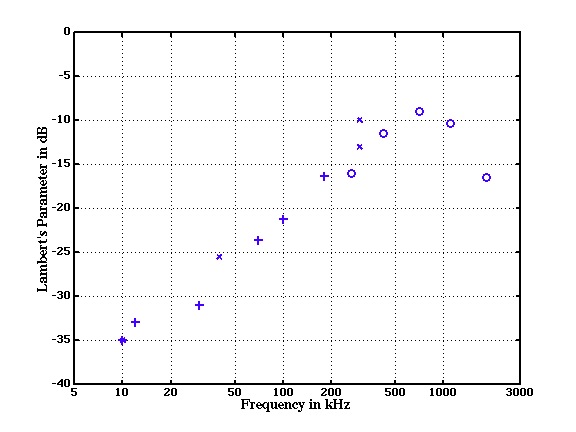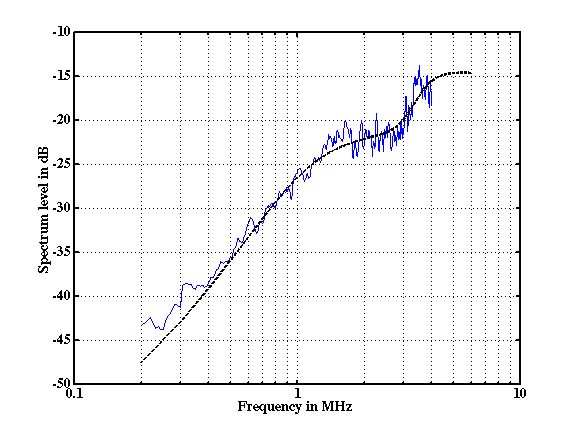High Frequency
Backscattering from Sandy Sediments
I did a series of experiments
in the lab on broadband backscattering from clean, degassed
sand we obtained locally (in San Diego). I used Panametrics
broadband transducers to obtain backscattered echoes at a
variety of grazing angles. These data were consistent in
most regards to field data we obtained off West Destin, FL
in 1999 (Greenlaw et al, 2004) but, due to the careful
preparation and grooming of the laboratory samples, showed
some differences from the field data.
The most interesting result from the field data was a
rolloff in Lambert's Parameter above about 700 kHz which,
in the paper, we ascribed to some effect due to grain size.
This was consistent with some lab work done earlier by
Kevin Williams (1988). Our data are the circles in the plot
below. Other, historical data are shown down to 10 kHz.

In the lab, we found the
expected increase with frequency, this time up to about 1.5
MHz. At this point, the Lambert's Parameter was constant
until it began rising again at 3 MHz. This shape was found
to bear a striking resemblence to the empirical scattering
model obtained by Sheng (1991) for individual sandgrains in
water (dashed line in figure below). This is not what would
be expected from a compacted body of sand grains but the
data are highly suggestive.

With these results, the
roll-off found in the field must be due to some other
factor. Surface roughness is certainly a candidate but so
is the possibility of small numbers of interstitial bubbles
in the sediments. At this time, I have no idea.



